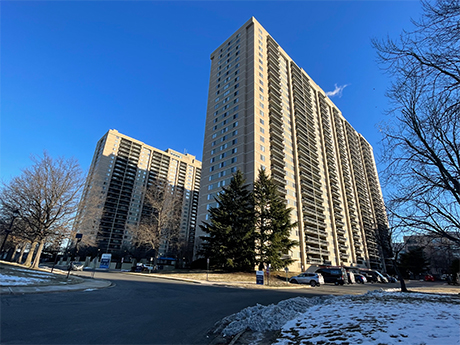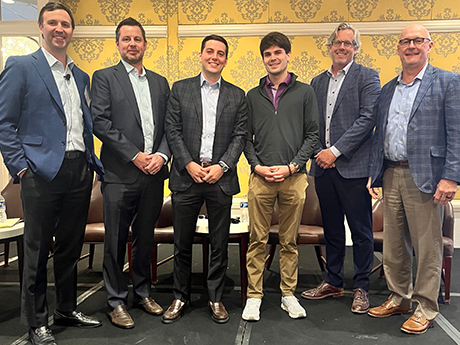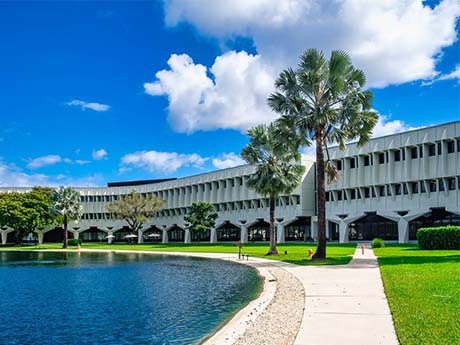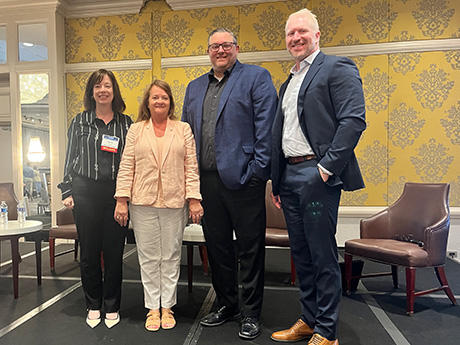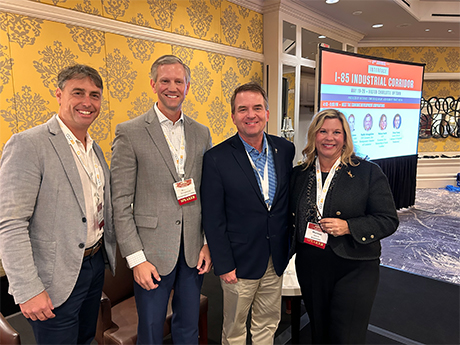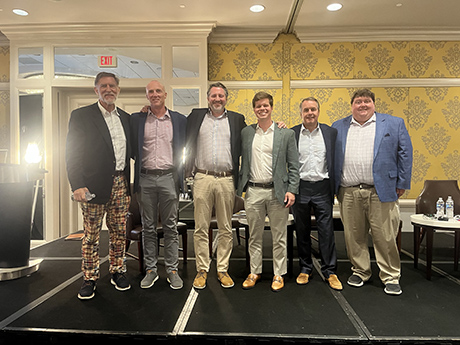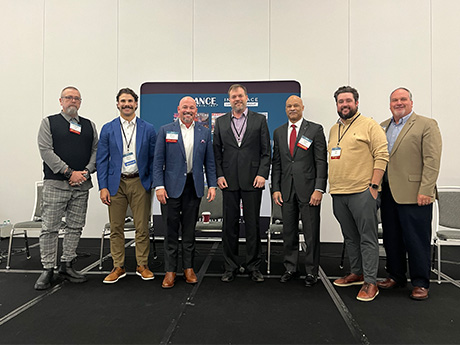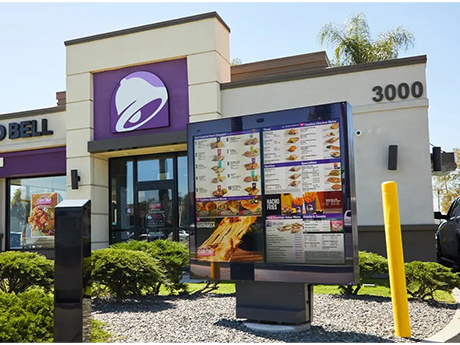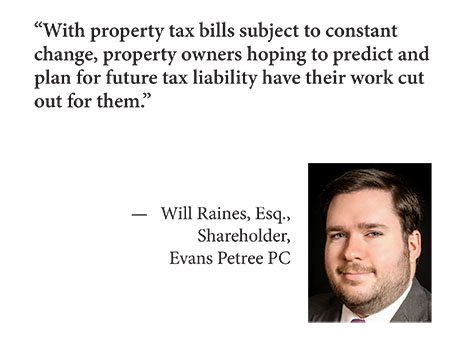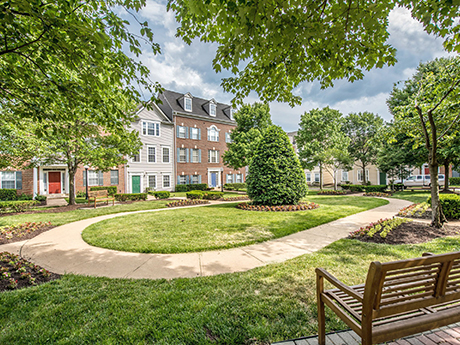Fannie Mae and Freddie Mac are adopting a more pro-business approach when it comes to closing multifamily loans in 2025 than in recent years, when sources say they were more selective. The two government-sponsored enterprises (GSEs) combined to produce 33 percent more multifamily loans in first-quarter 2025 compared with first-quarter 2024. “There is definitely a ‘volume on’ mindset at both shops,” says Landon Litty, director of agency sales at BWE. “This is a real positive for borrowers.” For Fannie Mae, the volume of multifamily loans totaled $11.8 billion in the first quarter of 2025, compared with $10.1 billion in the first quarter of 2024. Meanwhile, Freddie Mac produced approximately $15 billion in multifamily loans in the first quarter, financing around 144,000 rental units, well above the approximately $10 billion produced in first-quarter 2024. “The first quarter of 2025 has been dynamic, with real-time adjustments to meet market needs while maintaining a focus on soundness,” says a spokesperson at Freddie Mac Multifamily. Other sources attest that the GSEs are focusing on their sponsors more so than in previous years. T.J. Edwards, chief production officer for the multifamily finance division at Walker & Dunlop, says the agencies are proactively vetting first-time borrowers …
Southeast Feature Archive
Affordable HousingDistrict of ColumbiaFeaturesHeartland Feature ArchiveMultifamilyMultifamily & Affordable Housing Feature ArchiveNortheast Feature ArchiveSoutheastSoutheast Feature ArchiveTexas & Oklahoma Feature ArchiveWestern Feature Archive
Affordable HousingConference CoverageFeaturesMultifamilyNorth CarolinaSoutheastSoutheast Feature Archive
Lenders Are Back in Action for Multifamily Development Deals, Says InterFace Panel
by John Nelson
CHARLOTTE, N.C. — In its first-quarter report, property management research firm RealPage stated that the “supply wave for multifamily was cresting” as the U.S. apartment sector set a record in terms of units absorbed (138,302), outpacing deliveries (116,092). A year prior, RealPage reported that deliveries (135,652) outstripped absorption (103,826) in first-quarter 2024. Will Block, partner and co-founder of Olympus Development Co., said that the flip in the U.S. apartment market’s supply-demand dynamic the past 12 months has made all the difference in terms of lenders’ perception. Editor’s note: InterFace Conference Group, a division of France Media Inc., produces networking and educational conferences for commercial real estate executives. To sign up for email announcements about specific events, visit www.interfaceconferencegroup.com/subscribe. “It couldn’t be more different what it looked like a year ago trying to capitalize deals in tertiary markets,” said Block. “Last year we would call 50 lenders with the hope of one to get to do it at terms that we didn’t like with ridiculous deposit requirements. I probably get four or five cold calls a week from bankers now.” Block’s comments came during the development panel at InterFace Carolinas Multifamily, an annual networking and information conference held on May 21 …
By Brett Reese of CP Group After several years of disruption, the office market is beginning to show meaningful signs of recovery. Market fundamentals are strengthening, sentiment is shifting and the data backs it up. Office sales totaled $64.3 billion last year, up nearly 21 percent from 2023, according to MSCI Real Assets. Net absorption also turned positive, with 6.5 million more square feet of U.S. office space leased than vacated, marking the most substantial annual gains since 2019. Rent growth has been substantial across key markets, lenders are re-engaging and marquee transactions are driving capital back to the sector. These are the first broad signs that the innovative strategies employed by experienced owners and operators over the past five years are beginning to pay off. Sun Belt momentum In Southeastern markets like South Florida and Atlanta, recovery outpaces national trends, driven by location, flexibility and amenitized space. Hard-learned lessons by tenants, lenders and landlords have reshaped the market. As the industry recalibrates, operators with conviction and capital can double down on what’s working. Debt is returning Perhaps the most significant harbinger of market recovery is the thawing of the debt markets. Just a year ago, lenders willing to underwrite …
InterFace Panel: Multifamily Operators Are Utilizing Fee Transparency, Concessions to Woo Renters
by John Nelson
CHARLOTTE, N.C. — The federal government has been cracking down on price gouging in recent months. Last month, the Federal Trade Commission (FTC) implemented a rule to ban “junk fees” from live event platforms like Ticketmaster, as well as hotels and other short-term lodging. This rule precludes the vendor or property owner/management firm from being able to charge hidden fees on the back end by requiring them to put the total cost upfront, inclusive of all mandatory fees and charges. And in January, the U.S. Justice Department (DOJ), along with 10 state attorneys general, followed up on its 2023 antitrust lawsuit with RealPage by adding six of the nation’s largest property managers to the lawsuit. Editor’s note: InterFace Conference Group, a division of France Media Inc., produces networking and educational conferences for commercial real estate executives. To sign up for email announcements about specific events, visit www.interfaceconferencegroup.com/subscribe. The amended complaint alleges that the companies — Greystar; Blackstone’s LivCor LLC; Camden Property Trust; Cushman & Wakefield Inc. (formerly operating independently as Pinnacle); Willow Bridge Property Co. (formerly Lincoln Residential); and Cortland Management LLC (Cortland) — used RealPage’s pricing algorithms via the company’s YieldStar platform to share sensitive data and coordinate pricing strategies, …
Tariffs Make ‘Challenging Deals Even More Challenging’ for Economic Development Officials, Says InterFace Panel
by John Nelson
CHARLOTTE, N.C. — Tariffs are at the forefront of the U.S. economic landscape as they impact costs and timelines for a multitude of industries. For the industrial real estate sector, developers and tenants alike are monitoring the severity at which tariffs can complicate their everyday business activity, thus economic development officials are playing a crucial role in helping companies mitigate those costs and delays. “A lot of our business comes down to reducing risks for companies,” said Melissa Smith, senior vice president of the Economic Development Partnership of North Carolina. “There’s a lot of scrambling due to tariffs. They make already challenging deals even more challenging. We have to be ready to help [companies] navigate through these challenges so that they can make a successful decision.” Editor’s note: InterFace Conference Group, a division of France Media Inc., produces networking and educational conferences for commercial real estate executives. To sign up for email announcements about specific events, visit www.interfaceconferencegroup.com/subscribe. Smith’s comments came on the opening night of InterFace I-85 Industrial Corridor, a two-day networking and information event held at the Hilton Charlotte Uptown hotel on May 19-20. Brian Young, senior director of Cushman & Wakefield’s Greenville office, moderated the discussion called …
Competition for Labor, Land Is Reshaping the I-85 Industrial Corridor, According to InterFace Panelists
by Abby Cox
CHARLOTTE, N.C. — Stretching from Alabama to Atlanta, through the Carolinas and into Virginia, the I-85 corridor has long been a backbone of industrial growth in the Southeastern United States. Once celebrated as a magnet for logistic hubs, manufacturing plants and warehouse developments, this valuable category of real estate is now showing signs of strain. Editor’s note: InterFace Conference Group, a division of France Media Inc., produces networking and educational conferences for commercial real estate executives. To sign up for email announcements about specific events, visit www.interfaceconferencegroup.com/subscribe. During the COVID-19 pandemic, industrial real estate, especially warehouses and distribution centers, saw a dramatic surge in demand due to a rise in e-commerce, inventory stockpiling due to supply chain issues and lower interest rates. Fast forward five years later, the industrial market is now experiencing a slowdown due to new pressures that are reversing or slowing down many of those trends. “People are concerned about making a decision today without knowing what’s going to happen tomorrow,” said John Coleman, senior vice president of Graham &. Co. Coleman specializes in representing both tenants and landlords across the Birmingham and Montgomery industrial markets in Alabama. Coleman’s comments came while on stage during the closing panel at InterFace …
Affordable Housing Developers Aim to Control What They Can Control, Say InterFace Panelists
by John Nelson
ATLANTA — Interest rates. Tariffs. Natural disasters. These three factors alone frighten any developer, let alone those who are tasked with delivering our nation’s affordable housing supply. Just to get to the ribbon-cutting ceremony, developers have an uphill climb. They have to obtain the land outright or in a ground lease agreement, navigate the permitting and entitlement processes, overcome any neighborhood pushback, raise equity and borrow the necessary capital and then build these communities on time and on budget. Editor’s note: InterFace Conference Group, a division of France Media Inc., produces networking and educational conferences for commercial real estate executives. To sign up for email announcements about specific events, visit www.interfaceconferencegroup.com/subscribe. “We try to stay in control of what we’re in control of,” said Christopher Byrd, Southeast region development director of LDG Development, an affordable housing developer based in Louisville, Ky. “As long as we are in the right markets with the right growth and the right partners, we are safe and insulated.” Byrd’s comments came while on stage during the development panel at InterFace Affordable Housing Southeast, a networking and information conference held at the Cobb Galleria Centre in Atlanta on Tuesday, May 7. Kelly Williams, vice president of …
By Casey Smallwood of SRS Real Estate Partners In today’s fiercely competitive quick-service restaurant (QSR) market, digital transformation and artificial intelligence (AI) are reshaping how brands operate, engage with customers and create value. An industry once defined by speed and consistency is now being reshaped by data, automation and intelligent personalization. Across the country, QSRs are embracing cutting-edge technologies to improve operations, enhance the customer experience and maximize profitability. From mobile ordering apps to AI-powered drive-thru automation and predictive inventory management, these innovations are redefining the QSR business model. To stay competitive and relevant in today’s fast-changing market, franchise operators, developers and commercial real estate investors must understand and adapt to these technology-driven shifts. At the heart of this evolution is digital transformation — the integration of digital technology across all aspects of the business. In the QSR landscape, this includes everything from mobile ordering apps, digital menu boards to contactless payment systems, smart kitchen equipment and sophisticated customer relationship management (CRM) tools. Unlike full-service restaurants that emphasize ambiance and table service, QSRs succeed by offering speed, convenience and consistency. Digital transformation amplifies these core strengths, allowing operators to serve more customers faster and more accurately while also collecting and …
By Will Raines, Esq. of Evans Petree PC Benjamin Franklin has been credited (dubiously) with the saying, “in this world nothing can be said to be certain, except death and taxes.” The Greek philosopher Heraclitus has been credited (also dubiously) with the saying, “the only constant in life is change.” To synthesize dubious quotes from two brilliant minds, “you will certainly have to pay taxes, and they will constantly change.” With property tax bills subject to constant change, property owners hoping to predict and plan for future tax liability have their work cut out for them. Here are the chief factors taxpayers should consider in tax planning: Track reassessments Governments base property taxes on two things: assessed value and tax rate. Both elements change on a regular basis, and it can be mind-boggling for taxpayers to stay on top of just exactly when and by how much their properties’ taxes will increase. Reappraisal systems vary. While most jurisdictions reappraise either annually or on a regular, multiyear cycle, some jurisdictions do not. Famously, California’s Proposition 13 requires reappraisal based on changes in ownership and other triggers, rather than on any regular cycle. A jurisdiction’s reappraisal history is no guarantee of its …
WASHINGTON, D.C. — The Mortgage Bankers Association (MBA) is forecasting that total commercial and multifamily mortgage borrowing and lending will rise to $583 billion in 2025, which is a 16 percent increase from 2024’s estimated total of $503 billion. The Washington, D.C.-based organization made the announcement at its 2025 Commercial/Multifamily Finance Convention and Expo (CREF) event taking place in San Diego. Multifamily lending, which is calculated into the total figure, is expected to rise to $361 billion in 2025 — also a 16 percent increase from last year’s estimate of $312 billion. MBA anticipates originations in 2026 will increase to $709 billion in total commercial real estate lending, with $419 billion of that allocated to multifamily lending. “Given the strong pickup in origination activity at the end of 2024, it appears that at least some borrowers and lenders are ready to move,” said Mike Fratantoni, MBA’s senior vice president and chief economist. “MBA is forecasting that interest rates are going to stay within a trading range for the next few years. We expect an increase in originations across property types and capital sources, but certainly recognize the additional challenges posed by the large number of loans scheduled to mature in …
Newer Posts


